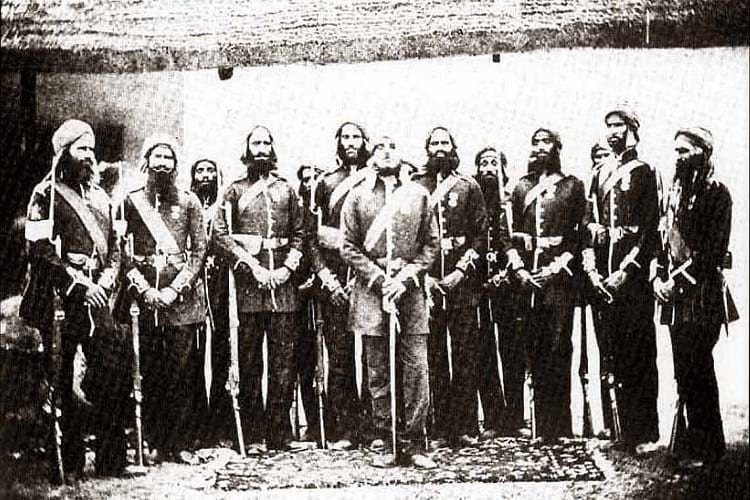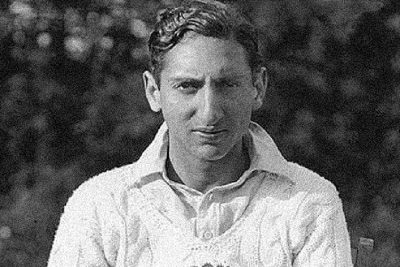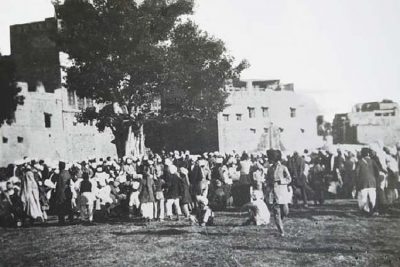Battle of Saragarhi: When 21 Valiant Indian Soldiers Held Their Ground, Fiercely Fighting Against Thousands of Afghans
Share

Battle of Saragarhi: Members of the 11th Sikh Regiment of the British Indian Army. (Profitoftruth85 / Wikimedia Commons)
India is an independent nation and also the largest democracy in the world. But before she became a sovereign state, a lot of battles have been fought on her soil to achieve freedom. One such heroic saga of undaunted bravery and unmatched courage dates back to the year 1897. The Battle of Saragarhi, named after the village of Saragarhi, was an epic act of valour in the history of India that fills every Indian with a deep sense of veneration and great pride.
When Afridis rose in rebellion at Tirah Campaign
Between the years 1897-1898, India was under the British rule and Pakistan had yet to become a separate state. The government of British India had given the Afridi tribe (of Pakistan) subsidy to safeguard the Khyber Pass – a mountainous pass, which borders between Pakistan and Afghanistan. The government had also assigned the local Afridis occupation of the Pass to defend the nation when the time came. However, as misfortune had it, they rose in rebellion together with their tribesmen, along with the Pashtun Orakzais (basically from Afghanistan) and intruded Tirah Expedition. But the bloodbath at the Battle of Saragarhi was only the precursor to the Tirah Campaign, fought at the North-West Frontier Province, which is now officially occupied by tribal Pakistanis.

Afridi tribe, 1866. (Library of Congress)
Saragarhi and the 36th Sikhs of the British Indian Army
Just a month before the Afridis and Orakzais infiltrated the Tirah Campaign, in September, 1897, the Pashtun Orakzais waged war with the British Indian Army, leaving a bloody trail in its wake. In the North-West Frontier Province, modern-day Pakistani Province, more than 10,000 Afghani tribesmen fought with only twenty-one Sikh soldiers, who did not leave the battlefield, despite knowing that their fates were already sealed. The 36th Regiment of the British Indian Army, also known as the 36th Sikhs (now known as the 4th Battalion of Sikh Regiment of the Indian Army), were posted at Saragarhi, who did not know what destiny had in store for them, early in the morning of September 12.
Part of British India back then, Saragarhi was an outpost located between Fort Lockhart and Fort Cavagnari. It acted as a communication outpost that relayed messages between the two British forts by means of heliography. On 12th of September, Havildar Ishar Singh and Gurmukh Singh observed that the Pashtun Orakzai tribesmen were heading towards Saragarhi in the thousands, to make way ahead to Fort Lockhart. Gurmukh Singh, who was the signalman, immediately sent a message to the commanding officer Lieutenant Colonel John Haughton at Lockhart. Not prepared for a siege, they expected help to come in from all corners. But Lt. Col. Haughton requested them to hold their positions until reinforcement could be summoned. Havildar Ishar Singh and his men complied with the orders and prepared for what lay ahead.
The Battle of Saragarhi
As the Pathans marched forward towards Saragarhi, the twenty-one men at the outpost, who only acted as messengers, knew the time had come for them to rise to the occasion. They held the ground and tried to delay the enemy from infiltrating further towards the next outpost, but it was obvious they had been clearly outnumbered. The enemy came in the thousands. Not sure exactly how many Pashtun Orakzais were in the enemy camp, but records state there could have been approximately between ten to fourteen to even twenty thousands of them. And these Afghani men were challenged by only a handful of gallant Sikh soldiers of the British Indian Army.
By now it was clear that one Sikh soldier had to take on at least 500 Afghanis, but there was another hitch. Each soldier had 400 rounds of ammo for their 4.5 kg Martini-Henry, which meant they couldn’t just rely on firepower alone. They tried to fight off the over ten thousand Afghani enemies for hours but were heavily under assault. As the Orakzais attacked, they received stiff competition from the 36th Sikhs and as many as sixty of their men were killed. They launched a second attack, but it was thwarted again by the Sikh soldiers. By noon, one British Indian soldier had died fighting and another left wounded. Gurmukh Singh forwarded the message to the Lockhart Fort but Lt. Col. Haughton’s back up had yet to come.
Defeated the second round too, the Pathans then set the nearby bushes ablaze hoping to ambush the Sikh soldiers inside, by camouflaging themselves, but the defenders had not admitted defeat yet. Another Sikh soldier was charred to death, trying to protect the guard door. It was only when the enemy had begun getting inside that Havildar Ishar Singh decided to engage in a hand-to-hand combat instead of wasting precious ammunition. But then it had been too late.
The Pathans had breached the Saragarhi outpost and there was very little that Havildar Ishar Singh or anybody else could do. Gurmukh Singh, who had requested to get into action instead of only relaying messages, also died fighting. Ishar Singh fought till the very end, mortally wounded at that time. However, the twenty-one brave Sikh soldiers did not let down their lives for nothing. Despite no backup in sight, they decided to take on the enemy in the thousands and heroically took down more than six hundred of them. Historians are still of the opinion that Havildar Ishar Singh’s brave act of heroic courage in the face of adversity, is one of history’s most supreme military last-stands.
The delay tactic had worked in the martyrs’ favour and Lt. Col. Haughton could buy enough time to muster reinforcement in the next two days, which finally worked at Lockhart. All the 21 brave soldiers with unprecedented courage were posthumously awarded the Indian Order of Merit, which in today’s times, is equivalent to the Param Vir Chakra. Also, September 12 is observed as Saragarhi Day in memory of the bravehearts with unflinching guts who stood their ground.
Not part of folklore or fiction, the Battle of Saragarhi was truly an act of valiance that 21 mighty Sikh soldiers put up in defence And to pay homage, literary works and pop culture have narrations of this gallantry in great detail. Karan Johar’s Dharma Productions is all set to produce an upcoming movie titled ‘Kesari’, which will be directed by Anurag Singh. Featuring Akshay Kumar in the lead as Havildar Ishar Singh, the movie will be a fictionalized account of the factual Battle of Saragarhi, which is truly the greatest example of rare Indian heroism.
Enjoyed this article? Also, check out “The Tragedy of Jallianwala Bagh“.
Fact Analysis:
STSTW Media strives to deliver accurate information through careful research. However, things can go wrong. If you find the above article inaccurate or biased, please let us know at [email protected]













